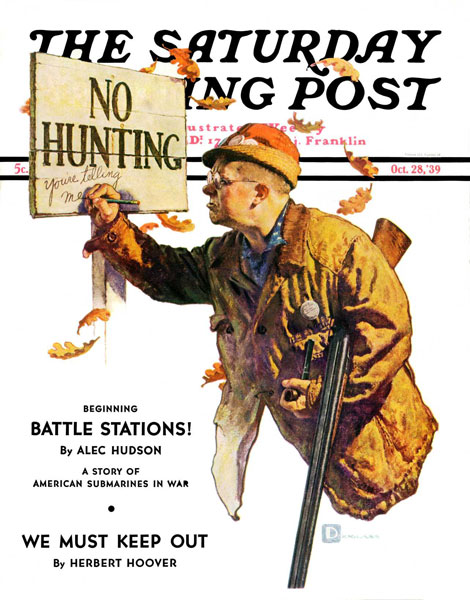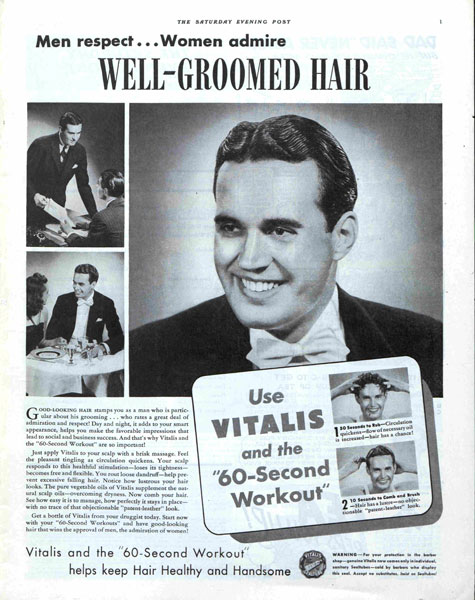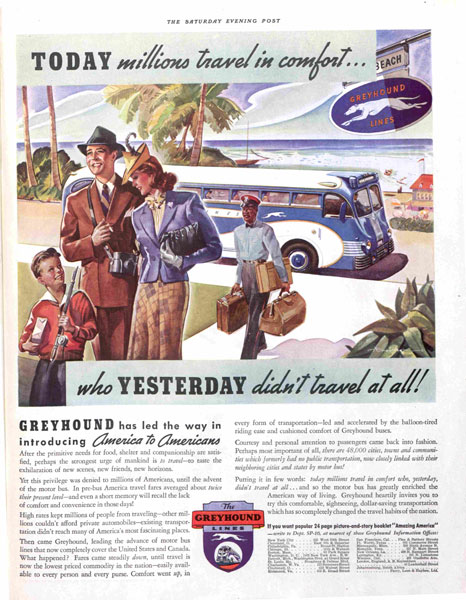Everyday Life in 1939
The date is October 28, 1939, and the New York Times is reporting on America’s arms embargo and the neutrality bill. The Post is offering ex-President Hoover’s isolationist appeal, “We Must Keep Out.”

But the big story in The Carlisle News is “Grass Fires Menace Farms.” In the previous week, five separate fires had burned over 200 acres in Sullivan County, Indiana. Other front-page stories concerned state conservation clubs, county electrification (“more than 50 miles of poles have been set since construction began Oct. 2”), and the Halloween carnival, which would be held in the “old gymnasium” next Tuesday.
When I read items like these in old small-town newspapers, I wonder just how accurately history captures the experience of previous generations. Histories of this era tend to focus on the major newspapers and national magazines. It’s easy to forget that life in these times wasn’t shaped just by war, economics, and politics. It was also birth and death announcements, corn-husking contests, and “Auto Crash at Busy Corner.”
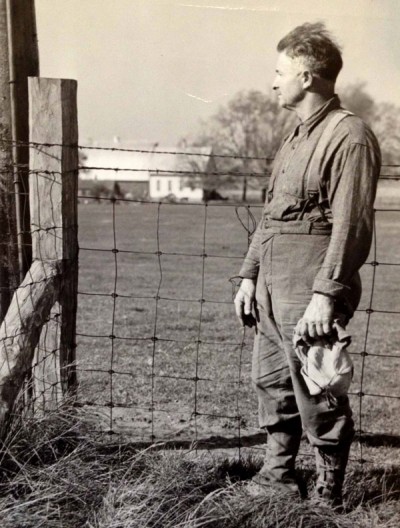
I’ve been digging up these details of American life from the small-town papers published in Sullivan County, Indiana. I chose this area simply because the 1940 census declared that it held the mean population center of the United States. (The precise location was in a cornfield just southeast of Carlisle.)
A farm community far from the city may seem too removed from mainstream America to be representative today. But in 1940, nearly half of America lived in such rural areas, and they stayed well informed of their neighbors thanks to their local newspapers. For example, The Carlisle News ran the regular front-page feature, Movements of People During the Past Week. Sixty-five years before Facebook, readers could keep track of their friends’ and neighbors’ activities: “French Willis made a business trip to Vincennes Wednesday … Mr. and Mrs. John Gibbs, of Indianapolis, spent the weekend visiting Mrs. Gibbs’ aunt, Mrs. Laura Niewald … Mr. and Mrs. Joe Finch, of Boonville, visited relatives here Monday evening while enroute home from a trip to South Bend.”
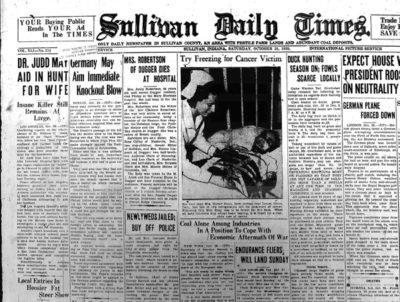
Just up the road from Carlisle is the more substantial town of Sullivan, with 5,000 people and three newspapers in 1939. The largest was the Sullivan Daily Times, which offered both national and international news. On Saturday, October 28, its front page was reporting the senate’s passage of a bill to revise the Neutrality Act, the same story reported in the New York Times.
If the bill passed in the House, the U.S. would lift the embargo that had prevented all sales of arms to the warring nations. The bill wasn’t really intended to help all sides, though. President Roosevelt had asked for this change because it had become obvious that the Neutrality Act only penalized pro-democratic nations. Germany and Japan had been well armed even before they set out on their military campaigns. With every conquest, they added more ammunition and equipment to their arsenal. France, England, and China were desperately short of weapons, shipping, and airplanes.

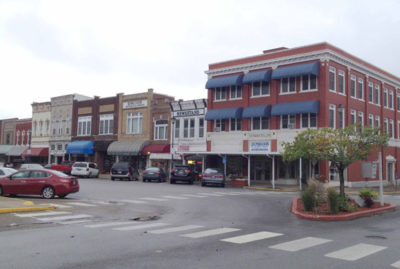
The editors at the Sullivan papers opposed lifting the arms embargo. Part of their objection probably came from their solid Republican opposition to anything President Roosevelt proposed. But they might also have seen the impending sale of weapons to England and France as a sign America was taking sides and inching closer to war. The paper ran a weekly column by Indiana’s 2nd District congressman, Gerald W. Landis (R), who conducted an opinion poll on the proposed change to the Neutrality Act. By October 28, the poll stood at 914 for continuing the embargo and 403 for lifting it. It wouldn’t have calmed the isolationists’ fears to read on the Daily Times’ front page that “Britons Rejoice at U.S. Senate’s Passage of Neutrality Bill.”
Other war news included “German Place Forced Down,” “Nazis Say 3 Subs Lost,” and “Germany May Aim Immediate Knockout Blow.” But these were surrounded by stories with more of a local interest, like “Duck Hunting Season On; Fowls Scarce Locally.”
And for fans of lurid crime stories, there was “Dr. Judd May Aid in Hunt for Wife: Insane Killer Remains at Large.” In 1933, Winnie Ruth Judd was convicted of first-degree murder, after the remains of two women were found in her luggage. She regarded them as rivals for a man with whom she had been having an affair. In court, Judd said she shot the women in self-defense, then packed them into shipping trunks with the help of her lover. She was committed to the Arizona State Hospital. By October 1939, though, she had escaped, and now her husband was offering to help find Mrs. Judd. She was eventually recaptured. Curiously, between 1935 and her parole in 1971, she escaped six times.
After reading these stories, Sullivan county residents might have switched on their Zenith console in the living room, or their Philips kitchen radio set to catch the Saturday-night broadcast from the city stations.
WBOW in Terre Haute was carrying the swing music of Jimmy Dorsey’s Orchestra. The Louisville, Kentucky, station would carry the countdown of the nation’s top songs on Your Hit Parade. At 8 p.m., many farm radios would be tuned in to the country music and comedy on National Barn Dance or the Western drama of Death Valley Days. Younger listeners might have chosen the Camel Caravan with Benny Goodman, broadcast out of Chicago.
From the CBS Camel Caravan broadcast of October 28, 1939. Listeners in Sullivan County would have particularly enjoyed Benny Goodman’s first song that night: “Back Home Again in Indiana.”
On the next evening, Clark Gable put in an appearance on theChase & Sanborn Hour, part of his promotional tour in the week preceding the December 15 premier of Gone With The Wind. In this clip, Charley McCarthy — Edgar Bergen’s alter ego—brags about his past girl friends, including Carole Lombard, apparently unaware that Gable and Lombard had recently married.
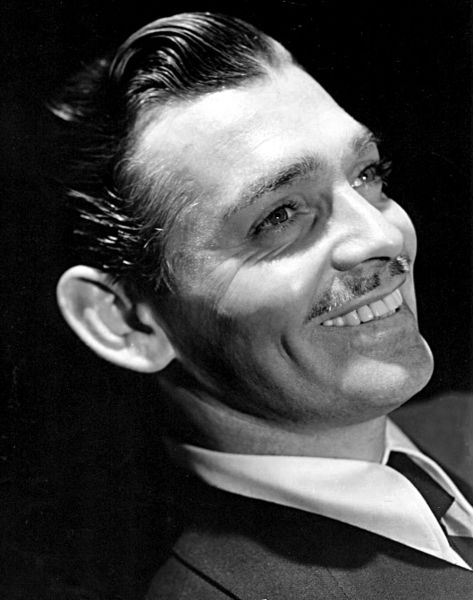
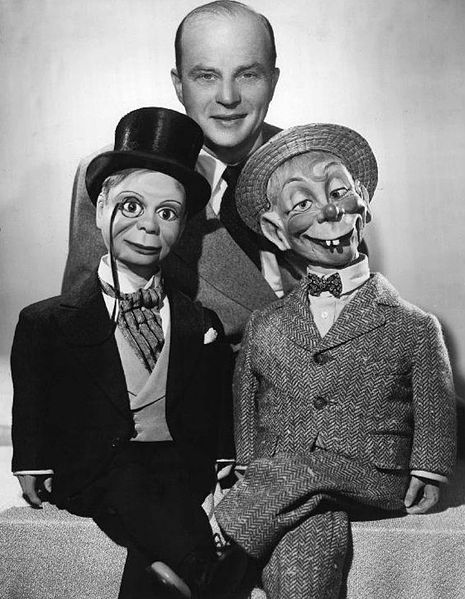
Others would head to the Sullivan movie theater. At the Sherman, they could watch Thunder Afloat with Wallace Beery (“Rebel! Rogue! Ruffian! Yet as gallant a fighting man as ever fired the last gun from a sinking ship!” hollered its newspaper advertisement). Down at the Lyric, they could see They Shall Have Music, whose newspaper ad promised, “Spellbound … that’s what you’ll be … just as the critics were.” At midnight, though, the Lyric was running an “adults only” feature titled Mad Youth. Its breathless ad copy spoke of “Home affairs forgotten — for love affairs. Thrill-seeking mothers spending alimony on hired love … Youthful innocence betrayed!” Yowza!
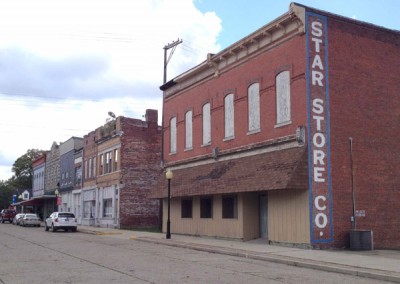

The prices in the newspaper ads seem shockingly low, but not when adjusted for inflation. The ad for Kling Brothers’ tailored-to-measure suits sold at Carlisle’s Star Store boasts prices starting at $21.50 (the equivalent to $350 today). Down the street at Sproatt Brothers, you could buy a pound of bacon or a pair of corn-husking gloves for 25 cents in 1939, which would be $4 in 2014.
Carlisle and Sullivan have not changed greatly since 1940. About a third of the buildings in downtown Carlisle are gone, but they haven’t been replaced by chain stores or fast-food franchises. The lots remain empty except for well-tended grass.
The storefronts that line the Sullivan courthouse square have had face-lifts, but the upper stories are virtually unchanged from when they were built decades before the 1940s.
But just as I’m thinking that life hasn’t changed much in 75 years, I come across this item:
Newlyweds Jailed; Buy Off Police
Mr. and Mrs. Garland Setzer, recent newlyweds, were given a noisy reception last night by 50 or 60 people from the Graysville community.
The newlyweds were loaded in a large truck which headed a parade into Sullivan. Several cars made up the caravan of merrymakers following the truck to this city.
In Sullivan, Chief of Police George Barrick and his officers immediately handcuffed Mr. and Mrs. Setzer and put them in jail under technical charges of disturbing the peace. Bail was eventually provided by the bride and groom themselves — they bought supper for the entire crowd, and the police officers, at Gray’s Inn.
If you want to know how long ago 1939 is, consider that people of that time thought the medieval custom of rousting newlyweds from bed and dragging them off for a noisy, public exhibition was great fun for everyone.
Step into 1939 with a peek at these pages from The Saturday Evening Post 75 years ago:
